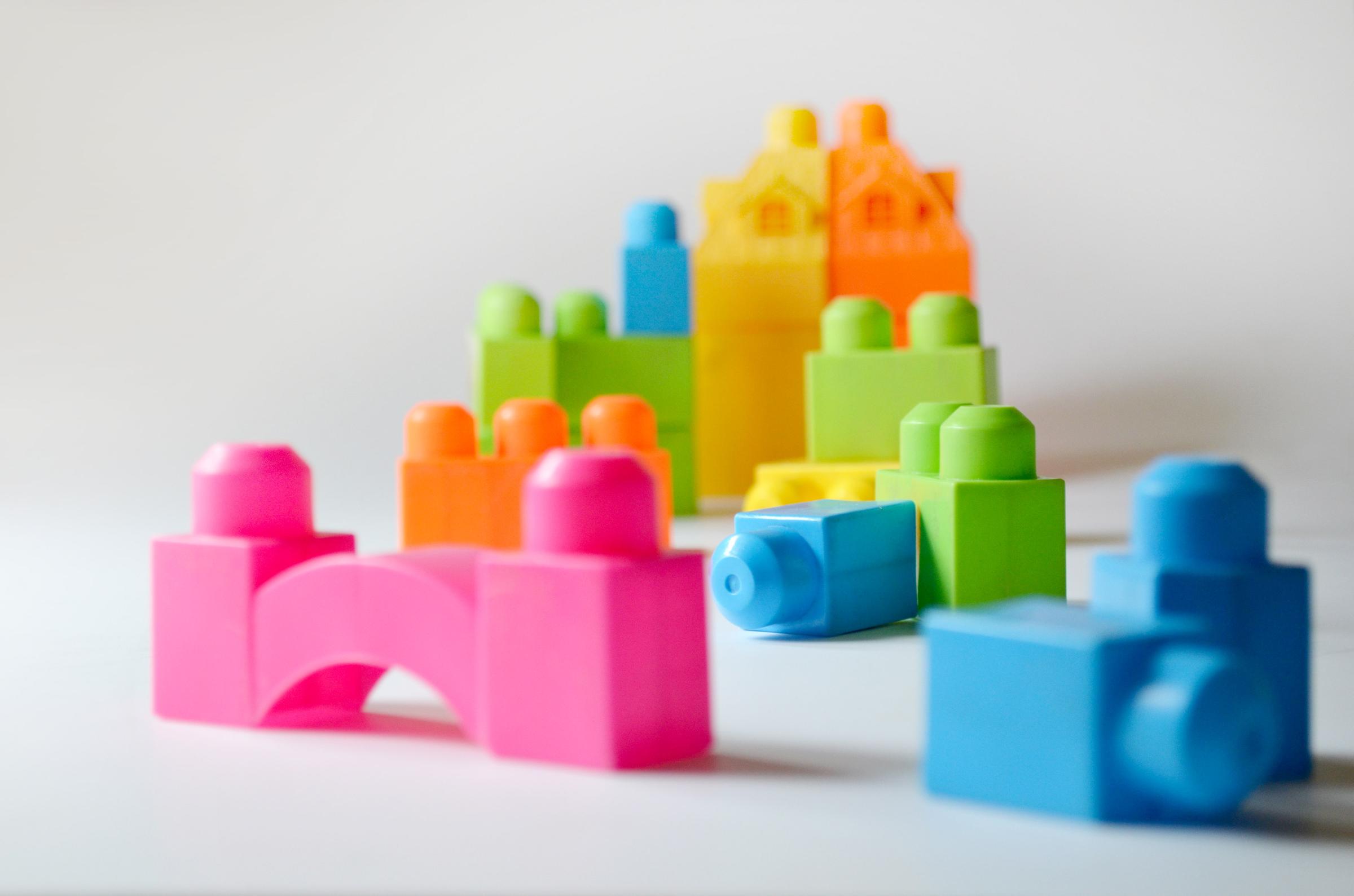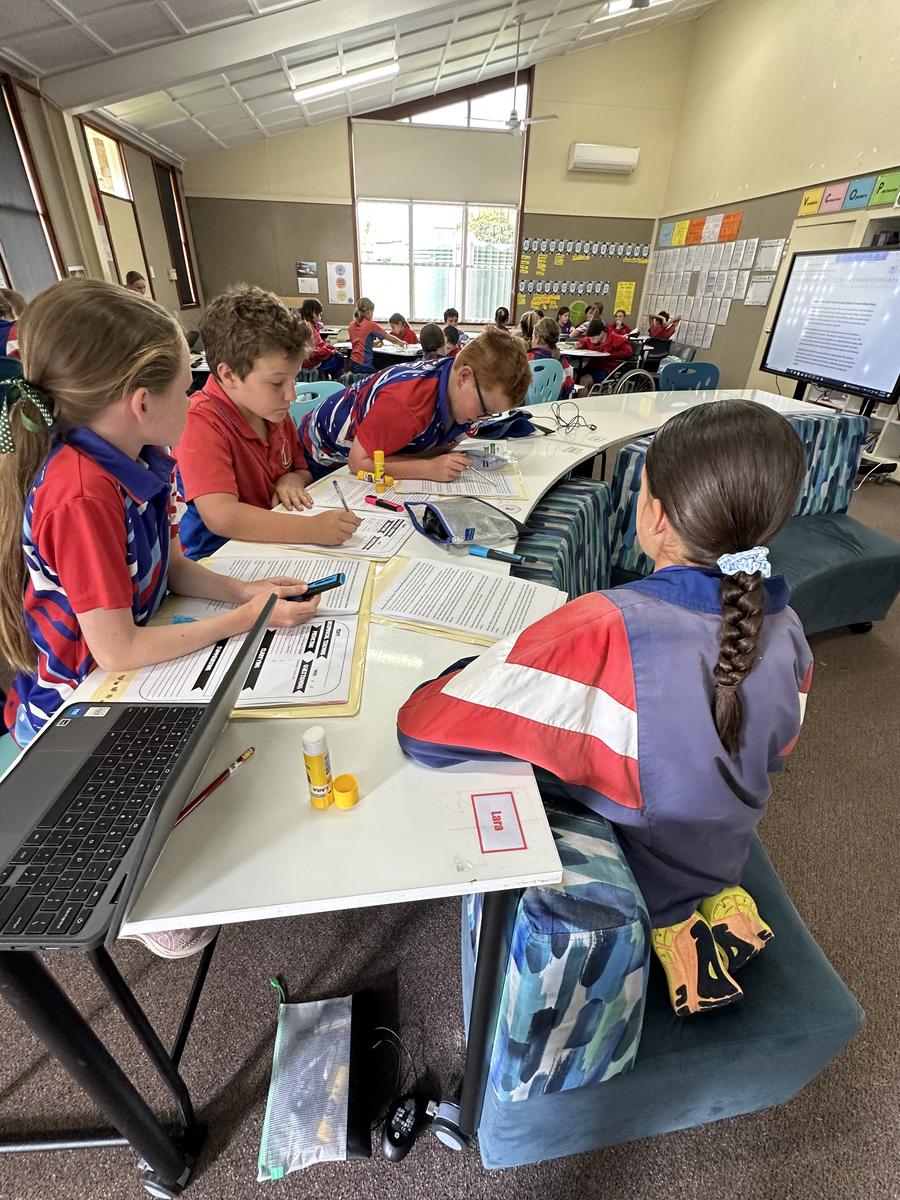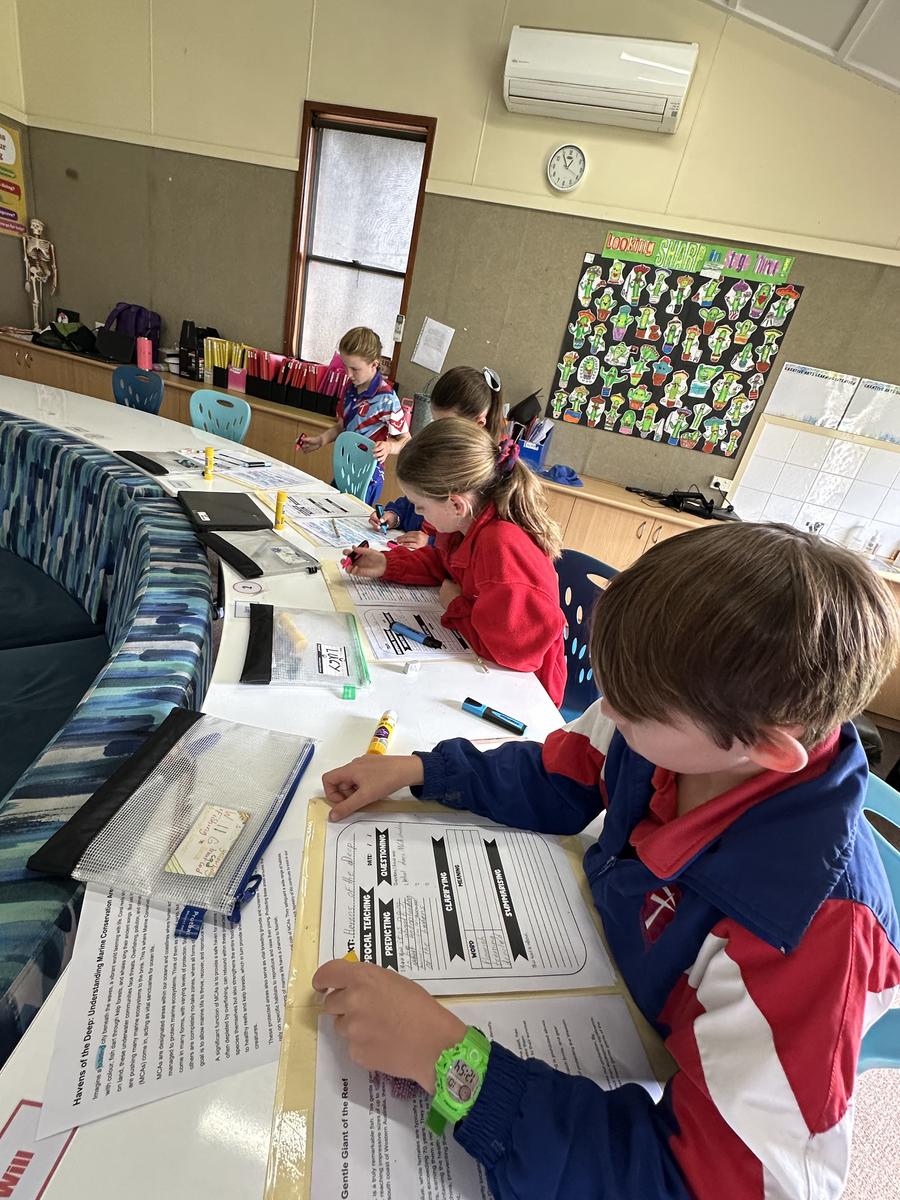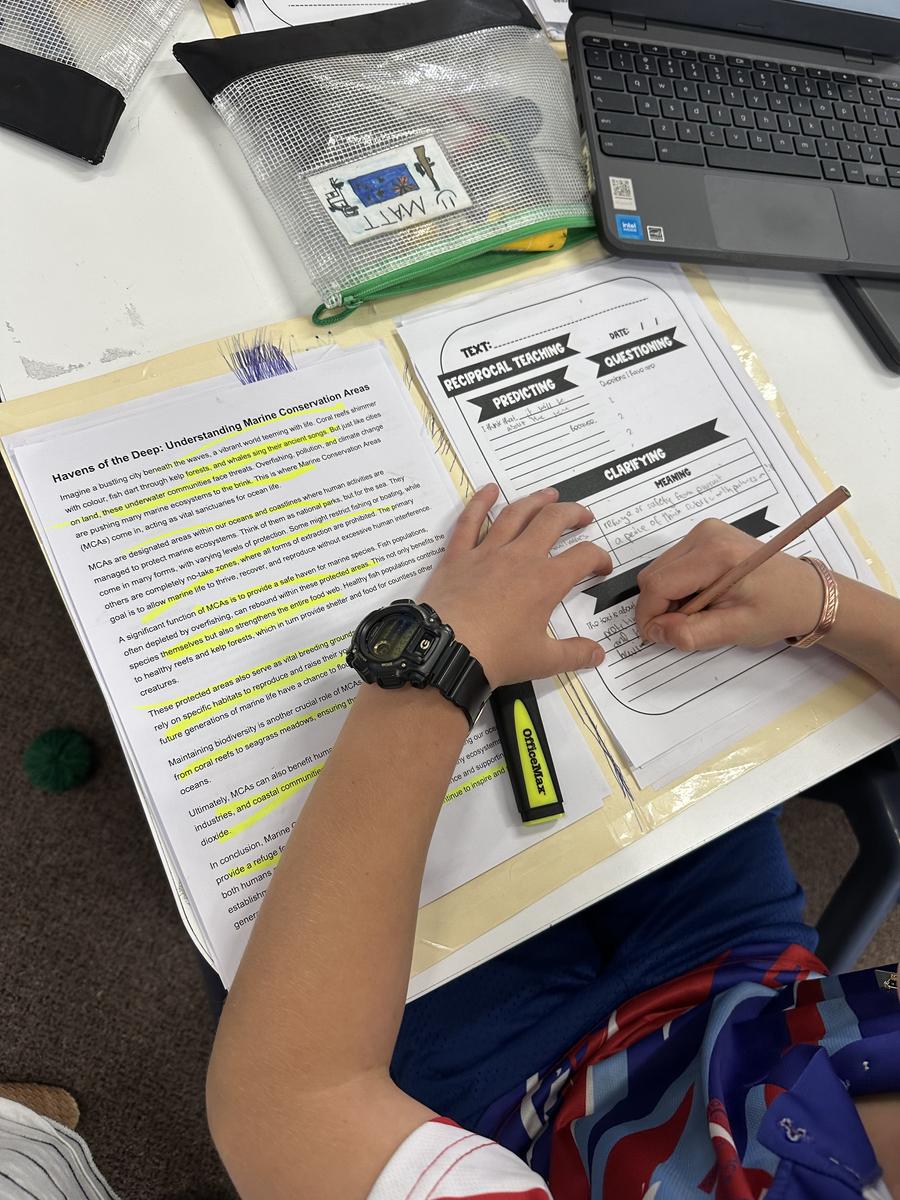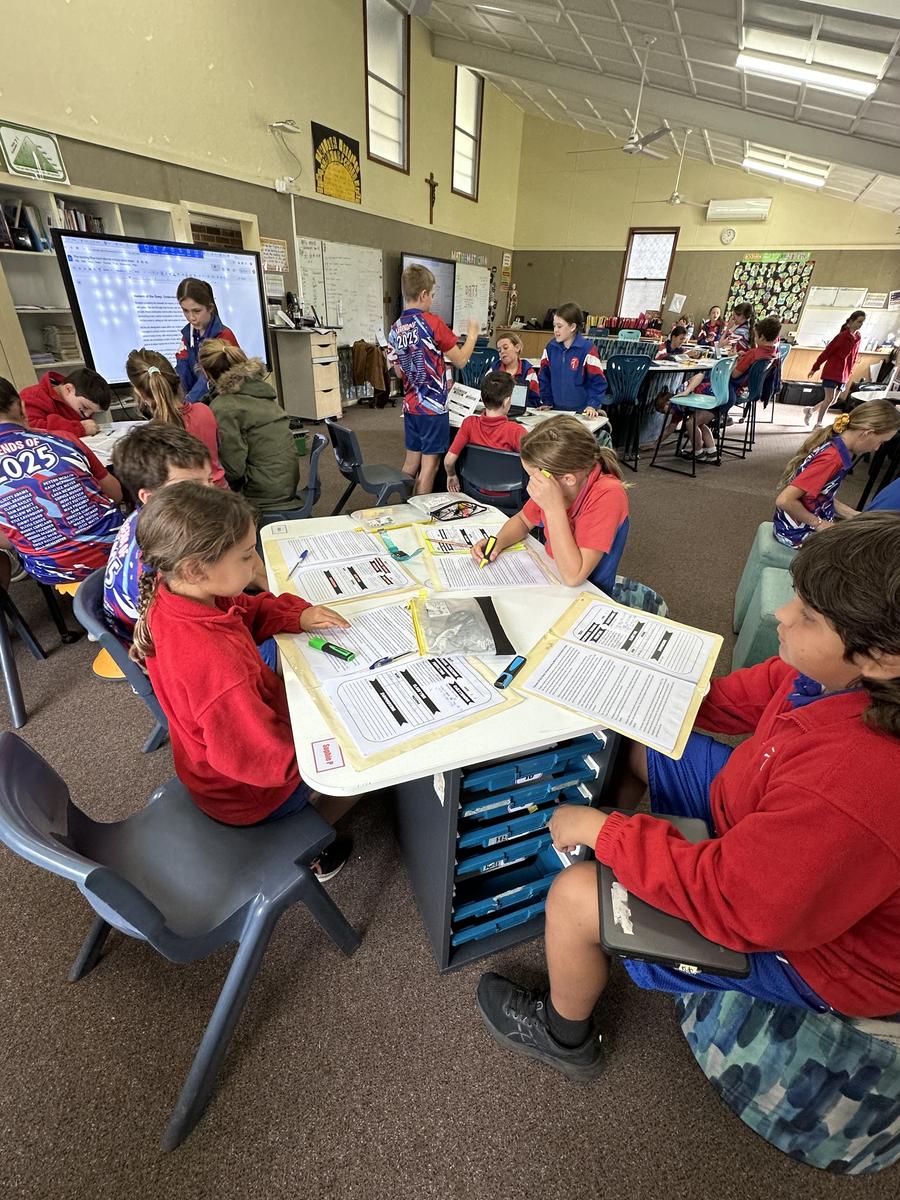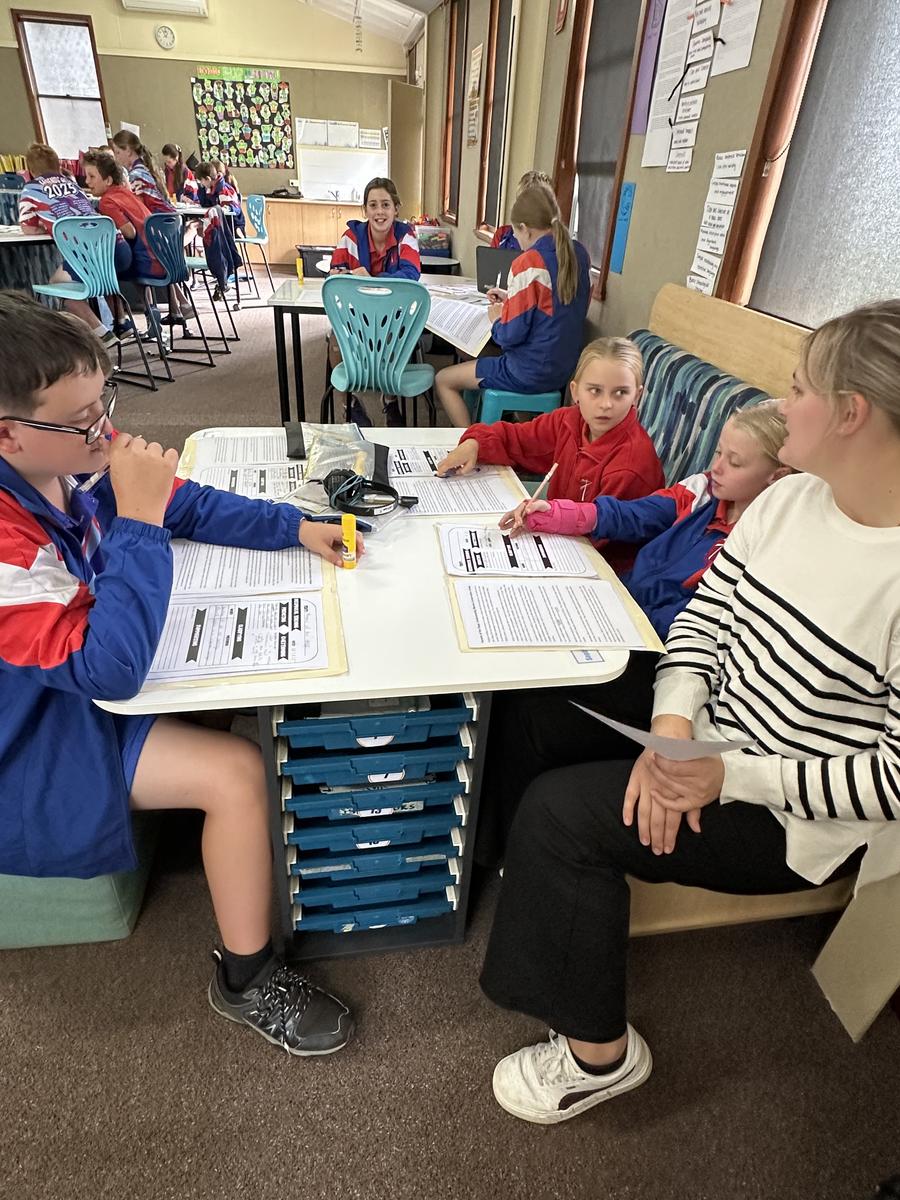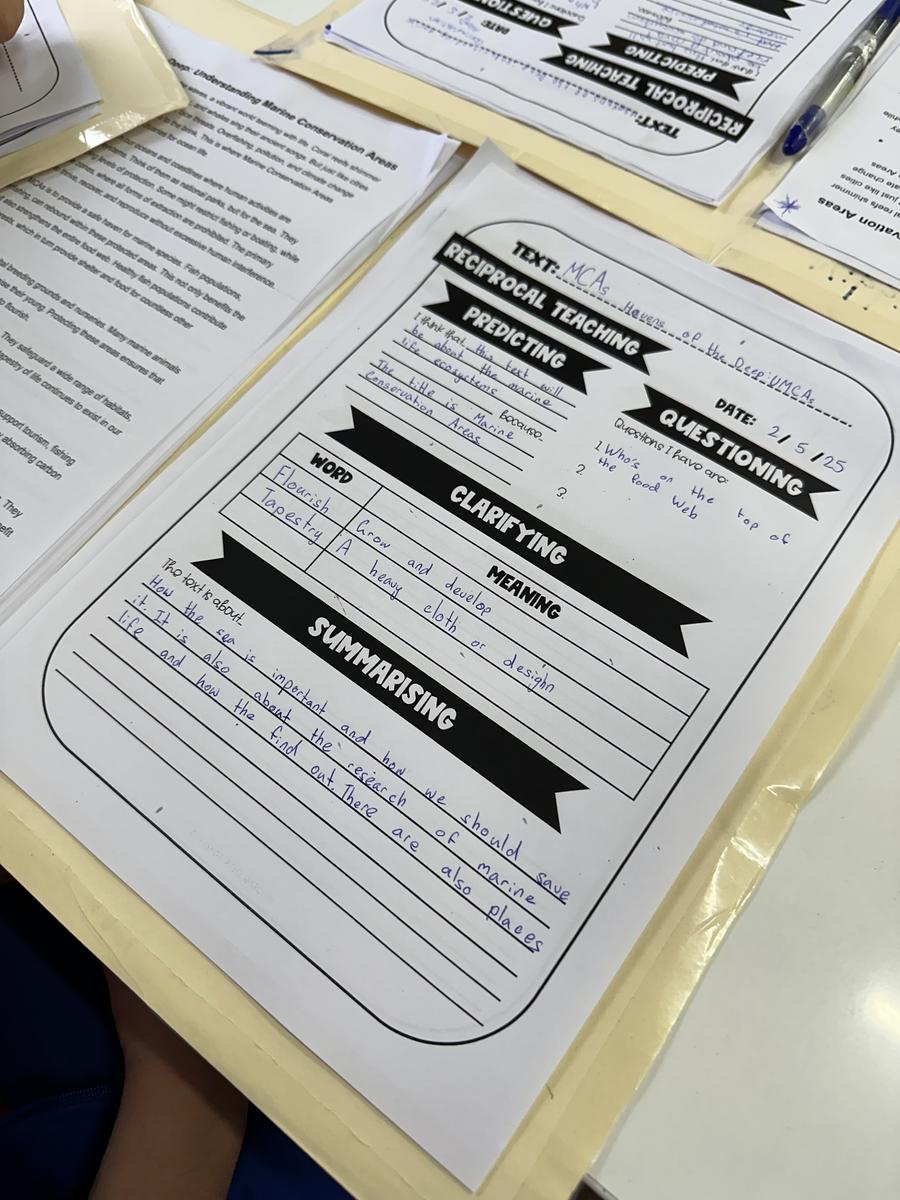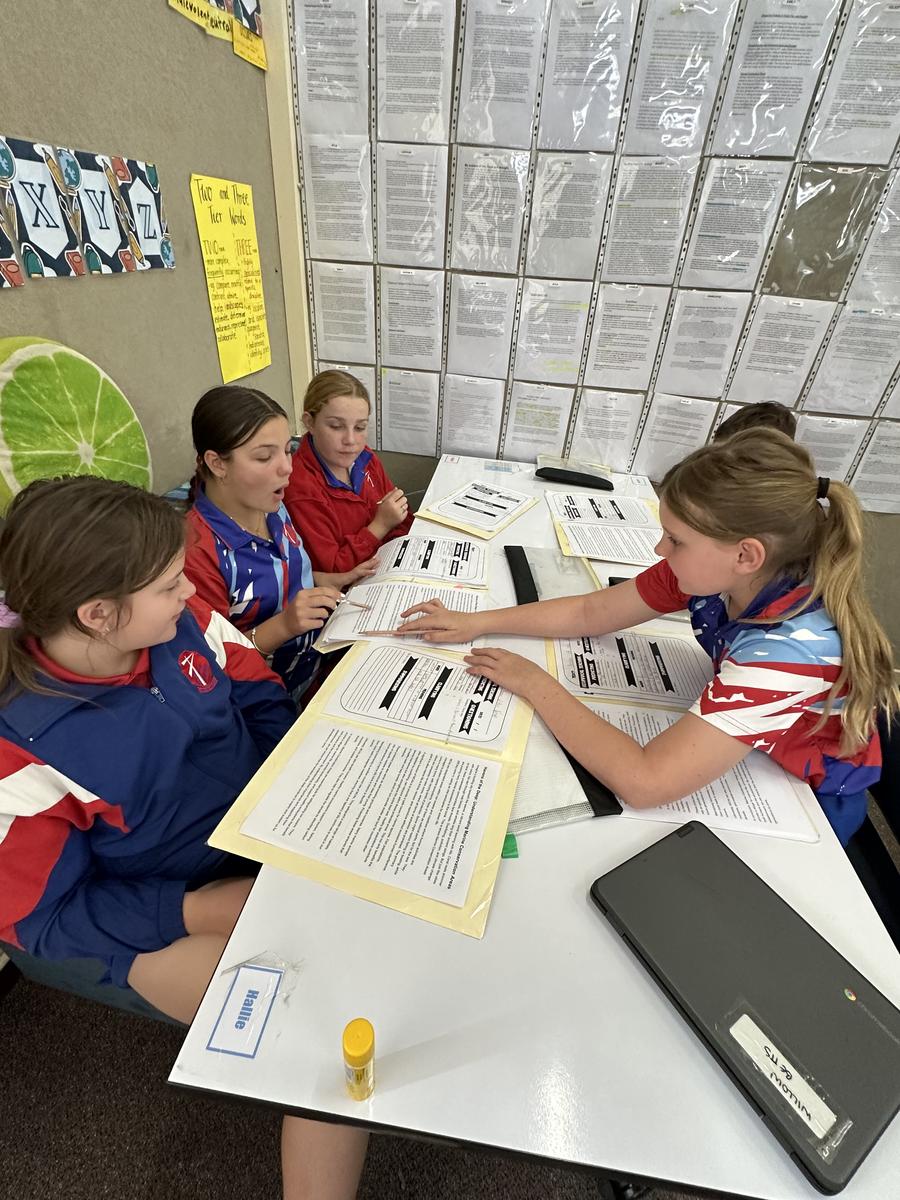Dear Families,
We all want our children to become confident and engaged readers. One powerful strategy that Stage 3 are implementing, which can significantly boost their comprehension skills, is called reciprocal reading. This technique encourages students to actively participate with the text, leading to a deeper understanding and greater enjoyment of reading.
Often conducted in groups of around four students, reciprocal reading involves each student taking on the roles of a discussion leader, guiding themselves and their peers through a text using four key strategies: predicting, questioning, summarising, and clarifying. This group setting also fosters valuable collaboration skills as students work together to understand the material.
Let's take a closer look at each of these roles:
- Predicting: Before reading a section, students think about what might happen next based on the title, headings, pictures, or what they've read so far. This activates prior knowledge and sets a purpose for reading. Encouraging your child to say, "I think this part will be about..." can be a great starting point.
- Questioning: As they read, students are encouraged to ask questions about the text. These questions can be about things they don't understand, connections they're making, or even what might happen later. Prompting questions like, "Why did that character do that?" or "What does this word mean?" helps them actively engage with the content.
- Summarising: After reading a section, students identify the main ideas and retell them briefly in their own words. This helps them to focus on the most important information and solidify their understanding. You can ask, "What was the main point of what you just read?"
- Clarifying: During reading, students identify any words, phrases, or ideas that are unclear. They then use strategies like rereading, looking up definitions, or asking for help to understand them better. Encouraging them to say, "I don't understand this word/part..." is the first step towards clarification.
What are the benefits of reciprocal reading?
This active and collaborative approach to reading offers a wealth of advantages for your child:
- Improved Comprehension: By actively predicting, questioning, summarising, and clarifying together, students develop a deeper shared understanding of what they are reading.
- Increased Engagement: Taking on roles and discussing the text with peers makes reading more interactive and less passive, leading to greater interest and motivation.
- Enhanced Critical Thinking: Reciprocal reading encourages students to think critically about the text, analyze information, and make connections collaboratively.
- Development of Metacognitive Skills: It helps students become more aware of their own reading process and identify when they need to employ strategies to improve understanding, both individually and as a group.
- Building Collaboration Skills: Working in a group to achieve a common goal enhances communication, active listening, and the ability to share ideas effectively.
How can you support reciprocal reading at home?
While reciprocal reading is often done in a group at school, you can encourage the individual strategies when reading with your child. For example:
- Before starting a new page, ask, "What do you think will happen next?"
- During reading, pause and say, "What questions do you have about what we just read?"
- After a paragraph, ask, "Can you tell me the main idea of that part?"
- If your child encounters a tricky word, encourage them to reread the sentence or ask what it might mean.
By understanding the principles of reciprocal reading, you can better support your child's literacy development and appreciate the collaborative learning that takes place in the classroom.
